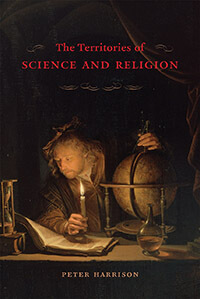Book Review: The Territories of Science and Religion
The Territories of Science and Religion
by Peter Harrison
Review by James K.A. Smith
Has there always been a conflict between science and religion? Have not divergent views of the universe always been in opposition? Author Peter Harrison, professor of the history of science at the University of Queensland, Australia, shows that the concepts of science and religion are relatively recent, and that it is their categories, rather than their concepts, that control our understanding of how the study of nature relates to the religious life. In The Territories of Science and Religion, he takes apart what we think we know about those two categories, then puts it together again in an enlightening new way. He traces the history of these concepts in parallel to discover ways that scientific study and the religious life might relate to, influence, and mutually enrich each other.
Harrison tracks the way religio and scientia of the ancient and medieval world come to mean something very different by the time they are translated as “religion” and “science” in early modern England. In both cases it is a move from inward virtues, habits, and disciplines to concrete beliefs, ideas, doctrines, and data. “From the sixteenth century onward,” Harrison observes, “we witness the beginning of the objectification of what was once an interior disposition.”
Ancient scientia was the intellectual habit that characterized the natural philosopher whose calling was moral and theological. “The classical Greek engagement with nature, while often touted as an ancestor to modern science, was so imbued with theological and moral elements that its relationship to ‘science’ as we now understand it is at best complicated.” Similarly, religio named a moral or theological virtue, and was bound up with right worship and a certain way of life. In contrast, the “religion” that emerged in the 16th and 17th centuries — and which we still name as such today — was an intellectualized “system of belief” collected in doctrines and propositions.
Harrison notes parallel implications in terms of utility and progress. When both scientia and religio were understood as virtues, then “progress” was synonymous with moral formation. But once both are concretized, progress is externalized and knowledge that “counts” is knowledge that is useful. “The philosophical regimen that had once been directed toward the moral shaping of the person was objectified into an experimental program that was indifferent to the moral character of those who pursued it.… Self-dominion, as the goal of the natural philosophical life, is eventually displaced by the quest for a dominion over things.” This reconfiguration of progress only benefits science. Once science gets into “the truth and goodness business,” as Harrison puts it, and goodness is identified with progress, then science becomes a competitor of religion.
Harrison regularly points out that our use of the word “science” is predicated on its own myth by which we agree to group an array of disparate human practices as if they constituted one thing. He says the parameters of “science” are that it is not “religion.” Ironically, “it was the formation of the modern notion of religion that made possible the ceding of this territory to science.” When religion shifted its concern to an “exterior” territory, it was already handing the keys over to a new master of that domain.
Harrison points out that, prior to the 17th century, “the Christian religion” was understood as a way of life rather than a “system of belief.” The modern “intellectualization” of religion and the “excarnation” of Christianity disembodies and reduces it to merely a “system of belief” that yields what Depeche Mode called “your own personal Jesus,” the only religion tolerated by secular modernity, and one easily trumped and marginalized by the public authority of science.
Harrison concludes there is no perennial conflict between “science” and “religion” because the phenomena didn’t exist to war with one another before the 17th century. But they do exist now. Perhaps their “skirmishes” are less conflicts between science and religion and more like “theological controversies waged by means of science.”

